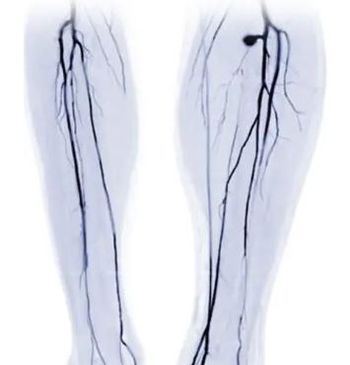
Novel Anticoagulants: Evidence-Based Patient Selection
Direct thrombin inhibitor dabigatran or factor Xa inhibitor apixaban or rivaroxaban? All are good choices for specific patient types.
Mrs. Jones, a 76-year-old woman with permanent atrial fibrillation (AF), hypertension, diabetes, diastolic dysfunction, and osteoarthritis presents to your clinic for follow-up. She has difficulty walking because of her arthritis and uses a walker for support. She has no history of falls or of stroke or transient ischemic attack. She has never had significant bleeding but uses a proton pump inhibitor for gastrointestinal reflux disorder. On her most recent chemistry screen, her renal function was normal.
Mrs. Jones is currently being treated with warfarin but she is frequently unable to get to her appointments to have her INR checked. Based on the last 6 months of INR readings, she tends to be within therapeutic range approximately 50% of the time. You are concerned about her inability to maintain regular follow-up for her INR and about her low time in therapeutic range (TTR).
Answer: A-Apixaban 5 mg twice dailyDiscussion
All 3 of the novel oral anticoagulants (NOAs) now approved in the United States were shown in clinical trials to be non-inferior to warfarin in reducing the risk of stroke and systemic embolization and reduce the risk of bleeding and intracranial hemorrhage.1-3 Therefore, they are appropriate as alternative therapies for patients with AF who have “failed” therapy with a vitamin K antagonist (VKA) or as first-line agents in new-onset AF. That said, when extrapolating clinical trial data to a “real world” population, there are always important considerations.
Any patient with a recent significant bleeding event was excluded from the clinical trials and so is likely not a good candidate for NOA therapy. Mrs. Jones has not had any clinically significant bleeding in the past and is therefore an appropriate candidate for treatment with any of agents. Furthermore, she has non-valvular AF. These drugs have not been studied in valvular-AF (ie, secondary to mitral stenosis) and should not be used in these settings.
In all the currently published studies of non-valvular AF treated with NOAs, the majority of patients were previously taking a VKA (50% in RELY [dabigatran]; 62% in ROCKET-AF [rivaroxaban]; and 57% in ARISTOTLE [apixaban]). Since there were also a significant number of patients in each trial who were VKA-nave, the results of these trials can practically be applied to either population. Mrs. Jones, who is currently taking warfarin, reflects the majority of the study patients but NOAs are still an option for her even if she had never before been on a VKA.
When selecting the appropriate NOA for a patient with AF, there are many clinical factors to consider. General issues include potential problems with patient compliance (rivaroxaban is dosed once daily; apixaban and dabigatran, twice daily) and drug-drug interactions (such as verapamil, which increases the bioavailability of dabigatran). More specifically, calculating a patient’s
If a patient has previously been on VKA therapy, as Mrs. Jones has, it also may be relevant to determine the time in therapeutic range (TTR) in order to decide which trial’s comparator arm is most applicable [RELY 64%, ROCKET-AF 55%, ARISTOTLE 62%]. In this case, the ROCKET-AF control group is closest to the patient’s TTR, which was ~50%. As an aside, the low TTR was one of the major criticisms of the ROCKET-AF trial with the counterpoint that it was a “sicker” patient population with a higher CHADS2 score. But, it is important to think about clinically especially when the patient has a high TTR. For example, if Mrs. Jones had a TTR of 64%, it might be a disservice to treat her with rivaroxaban since the ROCKET-AF trial demonstrated non-inferiority of rivaroxaban against patients on warfarin with a TTR of 55%.
Renal clearance is also a consideration. In this patient, who does not have an impaired glomerular filtration rate (GFR), any of the choices are appropriate since degree of renal clearance is not a concern with these agents. Notably, all 3 trials tested renally-adjusted doses of the NOAs: dabigatran 110 mg twice daily (not approved at that dose in US); rivaroxaban 15 mg daily; and, apixaban 2.5 mg twice daily. These doses can be used in patients with moderate renal impairment.
Finally, before settling on an agent, it is important to note the specific clinical outcome advantages each agent offers. Compared with warfarin, dabigatran at 150 mg was associated with a lower rate of ischemic stroke, rivaroxaban was associated with a lower rate of fatal bleeding, and apixaban was associated with a reduction in all-cause (but not cardiovascular) mortality.
Everything else being equal, apixaban 5 mg twice daily may be the best choice for our patient because it demonstrated a mortality benefit, even against a VKA arm with TTR of 62%. However, any of the novel anticoagulant agents would be a reasonable choice for Mrs. Jones.
References:
1. Connolly SJ, Ezekowitz MD, Yusuf S, et al. Dabigatran versus warfarin in patients with atrial fibrillation. N Engl J Med. 2009;361:1139-1151.
2. Patel MR, Mahaffey KW, Garg J, et al. Rivaroxaban versus warfarin in nonvalvular atrial fibrillation. N Engl J Med. 2011;365:883-891.
3. Granger CB, Alexander JH, McMurray JJ,et al. Apixaban veruss warfarin in patients with atrial fibrillation. N Engl J Med. 2011;365:883-891.
Suggested Reading
Heidbuchel H, Verhamme P, Alings M, et al. EHRA practical guide on the use of new oral anticoagulants in patients with non-valvular atrial fibrillation.
Newsletter
Enhance your clinical practice with the Patient Care newsletter, offering the latest evidence-based guidelines, diagnostic insights, and treatment strategies for primary care physicians.

































































































































































































































































































